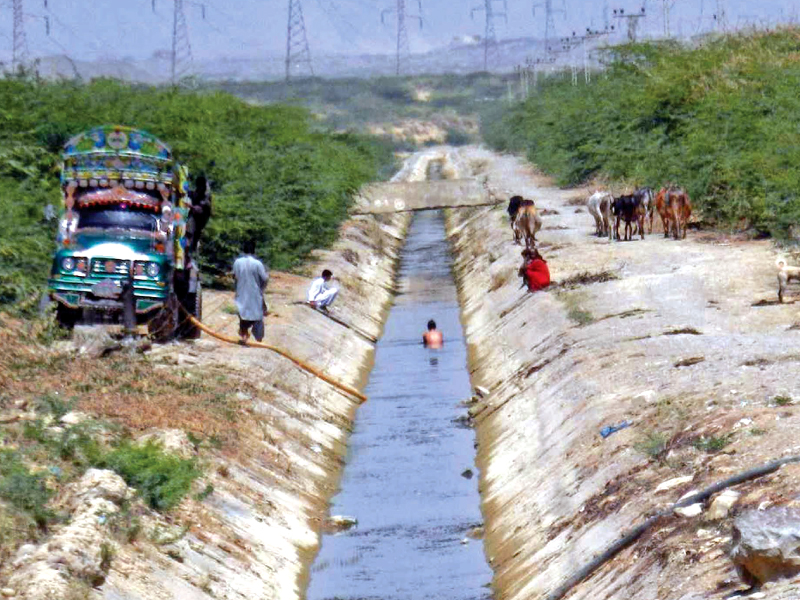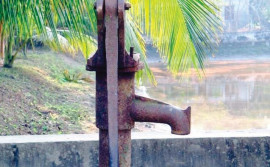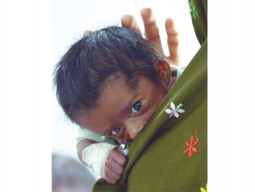
KARACHI/ THARPARKAR:
Khalid Jogee is afraid of ever staying a night in any village of Sindh. His experience of staying a night at Dalan Jo Tarr located in Taluka Chachro, district Tharparkar, was nothing short of a nightmare. “I can’t even imagine the kind of water my relatives use,” Jogee said.
“It was one of the worst experiences of my life, staying in the village and having to use and consume the water. My whole body was swollen. I was unable to see properly,” he shared. “Ever since, I do visit the village but I stay on only until I have my own water,” he smiled. “Whenever I visit any village anywhere in Sindh, I ask about the source of the water and don’t use it if it is groundwater.”
With the recent focus on the suffering of the people of Tharparkar, a very important point is the crux of the problems of this region as well as many regions of Pakistan – the lack of access to clean water fit for human consumption.
“The worst situation of quality water is in southern parts of Punjab and Sindh,” said Wateraid Pakistan Programme Manager, Policy and Advocacy, Abdul Hafeez. Information on the official website of Pakistan Council of Research in Water Resources (PCRWR) confirms that the concentration of arsenic in groundwater of several districts of Punjab and Sindh provinces has been observed through different water quality studies conducted by PCRWR, further adding that the natural presence of arsenic and other toxins in groundwater, the most common source of drinking water, is considered a worldwide public health crisis and an unprecedented natural disaster.
Hafeez said that underground water consumption in Pakistan is very common, and people use the water without proper testing. “The quality of water and its availability is a serious issue in Pakistan,” he added. He urged the government to look into the matter seriously, suggesting that raising awareness about this could reduce the incidence of water-borne diseases.
According to Hafeez, the increased death toll in Tharparkar is the outcome of unavailability of water, and the water available being of bad quality.
“The people of Thar don’t use drinkable water,” said Zafar Junejo, CEO Thardeep. “The available water is not fit for human consumption,” Junejo stressed. He said that different kinds of resulting diseases include kidney failure, liver disease, bone formation, teeth decaying and skin diseases.
Junejo informed this correspondent that not only fluoride but other elements like lead and arsenic are also found in the available water across the desert. “The water table will be disturbed in some parts of the district in the coming years,” he warned, adding that appropriate measures should immediately be taken.
“The access to drinkable water is the major issue of Tharparkar,” said the executive director of the Association for Water Applied Education and Renewable Energy (AWARE), a non-governmental organization, Ali Akbar Rahimoon. He criticized the lack of a drinkable water policy, saying that the federal government had made the first such policy in September 2009. “Sindh has not made a policy yet.”
Another social activist and writer, Bharo Amrani, said that a separate water policy is required for Tharparkar. “The major issue of Thar is water and all major sources of earning depend upon water.”
Environmentalist Nasir Ali Panhwar said that per capita water availability in Pakistan has reduced from 5,650 cubic meter per person in 1951 to current 1,000 cubic meter per person. He said that 60 per cent of infant deaths are caused by waterborne infections. Panwhar added that 250,000 children die each year in Pakistan because of waterborne diseases, referring to USAID data, and that stagnant dirty water, both in rural and urban areas, account for a large number of deaths caused by fatal diseases like cholera, malaria, dysentery and typhoid. According to WHO reports, 25 to 30 per cent of hospital admissions in Pakistan are connected to waterborne and bacterial parasite diseases.
In Sindh alone, the people of Naro, district Khairpur, Achhro Thar of district Sanghar, Badin, Thatta, Jamshoro and Dadu also use underground water without prior testing, to name a few. If the water is salty, they believe they won’t need additional salt in their foods.
The coastal regions of Sindh are more vulnerable. “I have to purchase water though I stay on the bank of the river,” said Mai Hoor who lives near Keti Bunder.
The water supply schemes and filtration projects in rural areas of Sindh are missing. “I have heard that the water available in our village is contaminated but we have to consume it; there is no other option,” said Ibrahim Pali of Seerani, a small town of Badin. Being one of the aged persons of the area, Pali believed that most diseases in his area increased when the taste of water changed.
“The entire population of Thatta city is being provided contaminated water,” said Imam Dino from Thatta. “Industrial waste is being released in the main supply canal from Jamshoro to Karachi.”
“The gutters and water lines go together not only in Johi but across the province,” Aslam Khushak, a resident of Dadu commented. “You say water is life but it is death actually in Sindh. Not blood but toxic water runs in our veins.”
Published in The Express Tribune, March 22nd, 2014.
COMMENTS (1)
Comments are moderated and generally will be posted if they are on-topic and not abusive.
For more information, please see our Comments FAQ


































































Its alarming that so many people of Sindh are suffering from the scarcity of water, but federal government is deterred to build dams on the already stressed Indus river at the price of people of Sindh. Shame on Sindh government for not providing the basic necessities to the indigenous people. I can guarantee if PPP-MQM coalition provincial government failed to address the basic needs of the people of Sindh. Then there might rise a third force in their constituency.